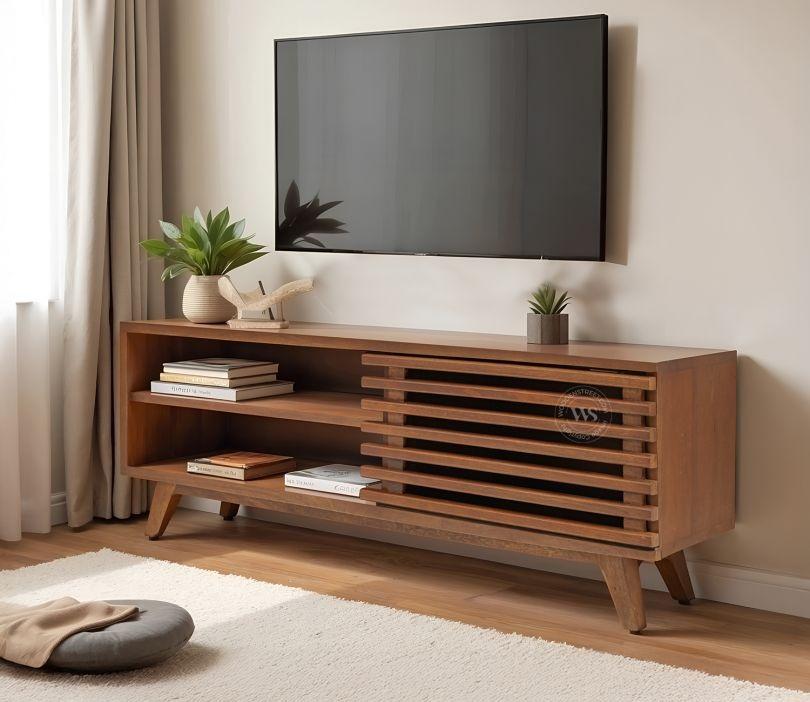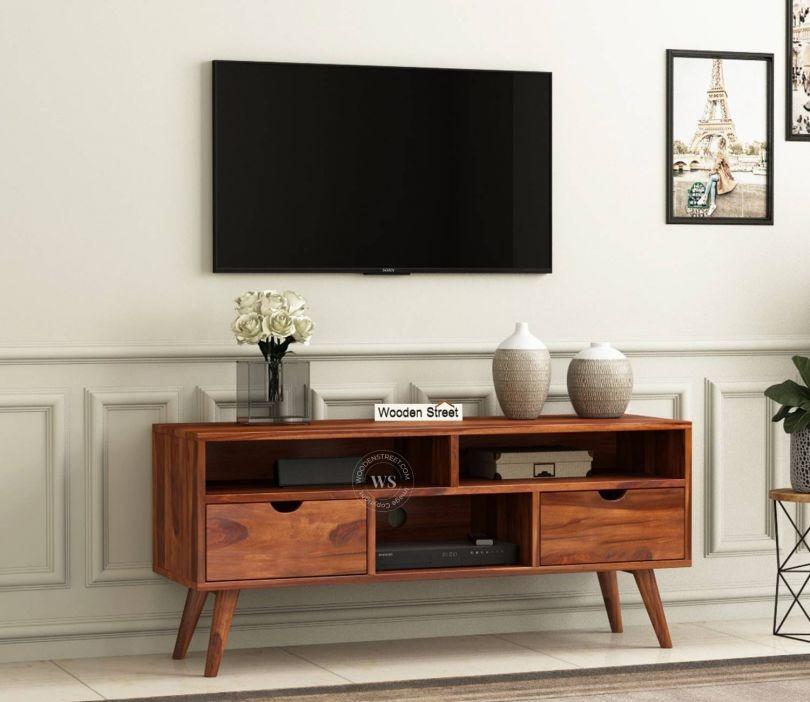Wall-Mounted vs. Floor-Standing TV Units: Which One Should You Pick?

In modern homes, the TV unit is no longer just a functional piece of furniture it has become a style statement that defines the living room’s ambiance. Whether you call it a TV unit, TV cabinet, or TV stand, choosing the right one can completely transform your space. Today, homeowners are often caught between two popular options: wall-mounted TV units and floor-standing TV units.
Both have their strengths and weaknesses, and the decision ultimately comes down to your living room size, style preferences, storage needs, and lifestyle. In this guide, we’ll compare both options in detail so you can make a confident choice for your home.
1. Understanding the Two Types of TV Units
Before diving into comparisons, let’s clearly define each type.
Wall-Mounted TV Unit
Also called a floating TV unit, this style attaches directly to the wall. The television itself can be mounted above the unit, while the cabinet or shelf beneath “floats” without touching the floor. This design is sleek, minimal, and perfect for modern interiors.
Common materials: MDF, engineered wood, plywood, or solid wood.
Popular for: Apartments, compact living rooms, minimalist decor.
Floor-Standing TV Unit
A traditional design where the tv unit stands on the floor with legs or a base, supporting the television and providing ample storage underneath. This is what most people refer to when they say wooden TV unit or TV stand.
Common materials: Solid wood, engineered wood, glass, or metal combinations.
Popular for: Larger living rooms, classic or transitional decor, and homes with more storage needs.
2. Wall-Mounted TV Units – Pros and Cons
Advantages
-
Space-Saving Design
If you have a small living room, wall mounted units are a blessing. By keeping the floor area clear, they create an open, airy feeling. -
Modern Aesthetic
These units bring a sleek, contemporary look that works well in minimalistic or high-end interiors. -
Easy Cleaning
Since the unit doesn’t touch the floor, cleaning underneath is effortless. No more dust bunnies hiding under your TV cabinet. -
Safety for Kids and Pets
Wall-mounted designs eliminate the risk of tipping over, which can happen with floor-standing units.
Disadvantages
-
Installation Hassles
You’ll need professional help to mount the unit securely—especially if your wall isn’t strong enough to bear the weight. -
Limited Storage
Floating TV units often have fewer drawers and shelves, which may be a downside for those with many gadgets, DVDs, or decor pieces. -
Permanent Fixture
Once installed, moving the unit is difficult. If you like changing furniture layouts often, this can be restrictive. -
Not Always Rental-Friendly
Drilling holes into the wall can be a problem in rental homes.
3. Floor-Standing TV Units – Pros and Cons
Advantages
-
Ample Storage Space
These units can include multiple drawers, cabinets, and shelves for all your media accessories. -
Easy to Install & Move
Just place it where you want—no drilling, no wall damage. Perfect for renters or people who move frequently. -
Variety in Design
From modern minimalism to rustic wooden TV unit styles, there’s a huge variety to match any decor theme. -
Strong & Sturdy
Ideal for holding larger TVs and heavier audio-visual equipment without worrying about wall strength.
Disadvantages
-
Consumes Floor Space
Not ideal for small apartments where every inch matters. -
Bulky Appearance
Large units can overwhelm a room, making it look smaller. -
Dust & Cleaning Issues
Dust can collect under and around the unit, especially if it has low clearance. -
Safety Concerns
In households with active pets or kids, a floor-standing TV stand might be more prone to accidents.
4. Wall-Mounted vs. Floor-Standing: Side-by-Side Comparison
| Feature | Wall-Mounted TV Unit | Floor-Standing TV Unit |
|---|---|---|
| Space Usage | Saves floor space, great for small rooms | Takes up floor space, better for large rooms |
| Storage | Limited | Ample storage options |
| Installation | Requires drilling & wall strength | No installation needed |
| Aesthetic Appeal | Modern, sleek look | Traditional, versatile designs |
| Mobility | Fixed once installed | Easily movable |
| Cleaning | Easy to clean floor area | Can be harder to clean underneath |
| Safety | Safer from tipping | Needs stability in homes with kids/pets |
5. Hybrid Solutions – The Best of Both Worlds
Some homeowners opt for a hybrid design—mounting the TV on the wall while placing a low-profile wooden TV cabinet underneath. This offers storage, a neat look, and the flexibility of decorative styling.
This approach is particularly popular in luxury interiors, as it blends the floating aesthetic with the practicality of a TV stand for living room storage.
6. How to Choose the Right TV Unit for Your Living Room
1. Measure Your Space
-
Small room: Go for a wall-mounted TV unit to save space.
-
Large room: Floor-standing units add character and presence.
2. Define Your Storage Needs
-
If you have a gaming console, set-top box, speakers, and decor items, a floor-standing TV cabinet is more practical.
-
If you prefer minimalism and only need space for a few essentials, a wall-mounted design works well.
3. Think About Safety
-
Households with children or pets may prefer wall-mounted units to prevent accidental knocks.
-
Floor-standing units should be sturdy and stable if chosen.
4. Match Your Interior Style
-
Modern / Minimalist: Wall-mounted TV units in white, black, or glossy finishes.
-
Classic / Rustic: Solid wooden TV unit with rich textures and natural finishes.
5. Consider Your Living Situation
-
Renters: Floor-standing units avoid wall damage.
-
Homeowners: Either option works, but permanent installation is easier to manage.
7. Popular Material Choices for TV Units
-
Solid Wood: Durable, timeless, perfect for warm, traditional interiors.
-
Engineered Wood: Affordable, versatile, and available in various finishes.
-
Metal & Glass: Sleek, modern, and great for contemporary setups.
-
High-Gloss Laminates: Stylish, reflective, and easy to clean.
8. Maintenance Tips for Longevity
-
Dust regularly using a soft cloth.
-
Avoid overloading shelves to prevent sagging or damage.
-
Keep away from moisture, especially wooden TV units.
-
Check fittings periodically for wall-mounted designs to ensure stability.
Conclusion
When it comes to wall-mounted vs. floor-standing TV units, there’s no one-size-fits-all answer. A wall-mounted TV unit is the go-to choice for compact spaces and modern aesthetics, while a floor-standing TV cabinet excels in storage and flexibility.
The right choice depends on your space, storage needs, style preferences, and whether you own or rent your home. If you want the best of both worlds, consider a hybrid setup a mounted TV with a sleek wooden cabinet underneath for added functionality and style.









